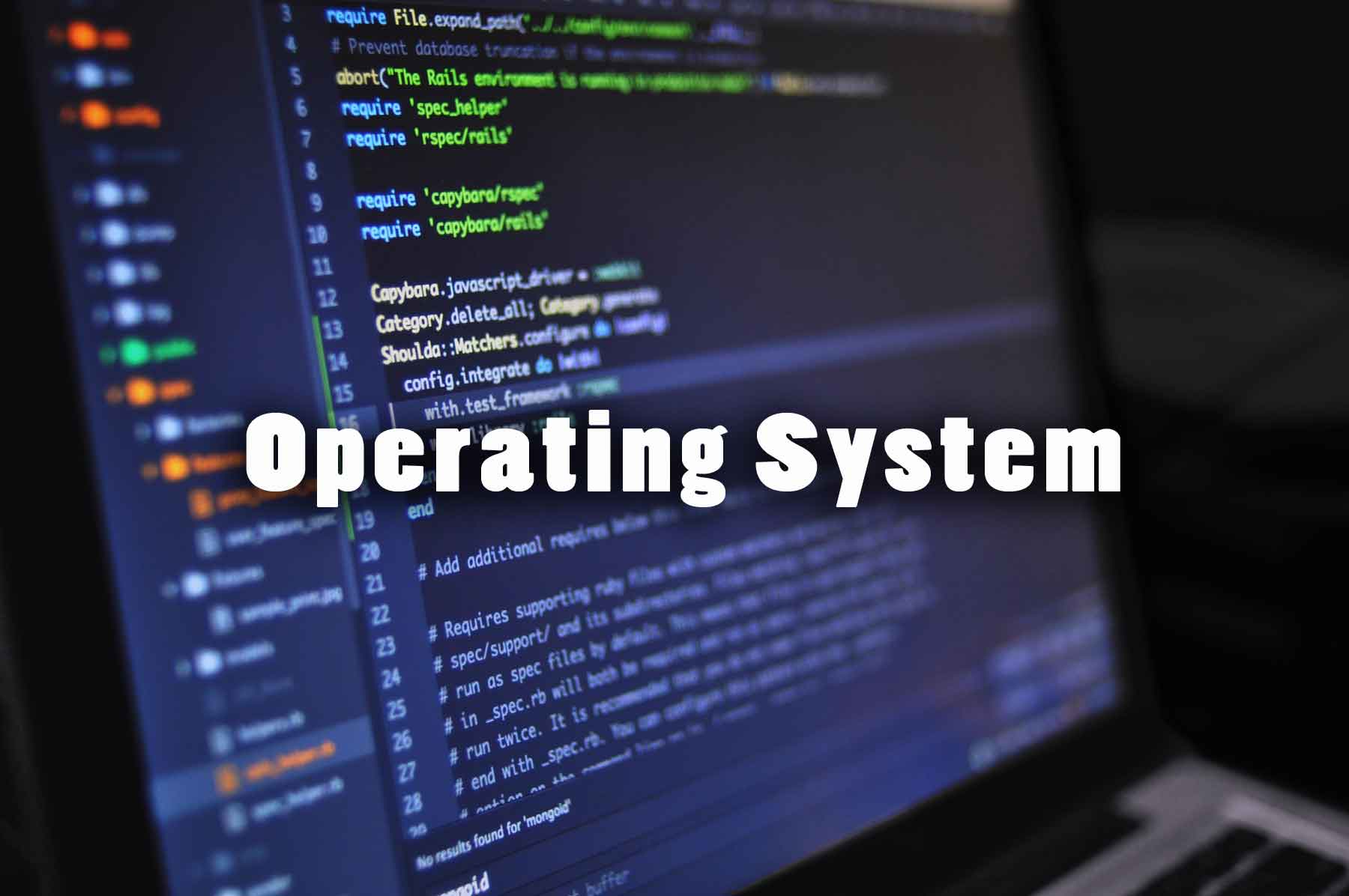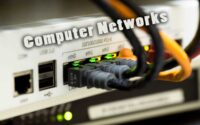Operating System Objective Questions and Answers
The Free download links of Operating System Objective Questions and Answers Papers enclosed below. Candidates who are going to start their preparation for the Operating System Objective papers can use these links. Download the Operating System Objective Papers PDF along with the Answers. Operating System Objective Papers are updated here. A vast number of applicants are browsing on the Internet for the Operating System Objective Question Papers & Syllabus. For those candidates, here we are providing the links for Operating System Objective Papers. Improve your knowledge by referring the Operating System Objective Question papers.

Objective Questions and Answers on Computer Networking
1. The practice of “budling” refer to
(a) selling computers alone
(b) selling peripheral devices with computers
(c) selling software to run on computers
(d) giving away software with a computer purchase
2. User-friendly systems are
(a) common among traditional mainframe operating systems
(b) easy to develop
(c) required for batch-oriented processing
(d) becoming more common
3. The primary purpose of an operating system is
(a) to make the most efficient use of the computer hardware
(b) to allow people to use the computer
(c) to keep systems programmers employed
(d) to make computers easier to use
4. Real-time systems are
(a) primarily used on mainframe computers
(b) used for monitoring events as they occur
(c) used for program development
(d) used for real-time interactive users.
5. Multiprogramming systems
(a) are easier to develop than single programming systems
(b) execute each job faster
(c) execute more jobs in the same time period
(d) are used only one large mainframe computers
6. Virtual memory is
(a) simple to implement
(b) used on all major commercial operating systems
(c) less efficient in utilization of memory
(d) useful when fast I/O devices are not available
7. Memory management is
(a) not used in modern operating systems
(b) replaced with virtual memory on current systems
(c) not used on multiprogramming systems
(d) critical for even the simplest operating systems
8. Scheduling is
(a) allowing job to use the processor
(b) unrelated to performance considerations
(c) quite simple to implement, even on large mainframes
(d) the same regardless of the purpose of the system.
9. Multiprocessing
(a) makes the operating system simpler
(b) allows multiple processes to run simultaneously
(c) is completely understood by all major computer vendors
(d) allows the same computer to have multiple processors
10. Device independence
(a) allows the computer to run without I/O devices
(b) allows programs to be written much more easily
(c) makes all devices look the same to the operating system
(d) allows tape drives to be substituted for disk drives
11. The operating system manages
(a) Memory
(b) Processor
(c) disk and I/O devices.
(d) all of the above
12. The process of transferring data intended for a peripheral device into a disk (or intermediate store) so that it can be transferred to peripheral at a more convenient time or in bulk, is known as
(a) Multiprogramming
(b) Spooling
(c) Caching
(d) virtual programming
13. A form of code that uses more than one process and processor, possibly of different type, and that may on occasions have more than one process or processor active at the same time, is known as
(a) Multiprogramming
(b) Multithreading
(c) Broadcasting
(d) time sharing
14. The technique, for sharing the time of a computer among several jobs, which switches jobs so rapidly such that each job appears to have the computer to itself is
(a) time sharing
(b) time out
(c) time domain
(d) multitasking
15. Which one of the following is initiated by the user program, all others are initio by external entities?
(a) Transition from ready state to running state.
(b) Transition from running state to ready state.
(c) Transition from running state to blocked state.
(d) Transition from blocked state to ready state.
16. Trap is a—– interrupt
(a) Synchronous
(b) Asynchronous
(c) Hardware
(d) operating system’s
17. Context switching is
(a) part of spooling
(b) part of polling
(c) part of interrupt handling
(d) part of interrupt servicing
18. The main advantage of interrupt concept is elimination of
(a) Spooling
(b) Polling
(c) job scheduling
(d) blocking the currently running process
19. FIFO scheduling is
(a) preemptive scheduling
(b) non-preemptive scheduling
(c) deadline scheduling
(d) fair-share scheduling
20. The kernel of the operating system remains in primary memory (and other part of the operating system remains in secondary storage) because
(a) it is mostly called (used)
(b) it manages all interrupt calls
(c) it controls all operations in a process
(d) it is low level
| Practice Questions | Objective Papers |
| Quiz | Important Questions |
| Mock Test | Previous Papers |
| Typical Question | Sample Papers |
| MCQs | Model Papers |
21. A semaphore count of negative n means (s = -n) that the queue contains __________ waiting processes.
(a) n + 1
(b) n
(c) n – 1
(d) 0
22. Cryptography technique is used in
(a) Polling
(b) job scheduling
(c) protection
(d) file management.
23. System mask indicates whether the CPU wishes to
(a) accept interrupts from a specific channel
(b) reject all interrupts
(c) reject some of interrupts
(d) reject all interrupts from selected channels
24. In memory management, fragmentation problem is caused by creation of
(a) large number of processes
(b) large number of small free holes.
(c) large number of free holes
(d) large number of waiting processes
25. A null process has process identifier.
(a) -1
(b) 0
(c) 1
(d) NULL
26. Find odd man out.
(a) Executive
(b) Task manager
(c) Kernel
(d) Spooler
27. Race around condition occurs when
(a) two processes unknowingly wait for resources that are held by each other
(b) two processes wait for the same resource
(c) all resources are shared.
(d) two processes share the same shared resource
28. Virtual device is
(a) dedicated for one purpose
(b) a dedicated device converted into a shared device
(c) a shared device converted into a dedicated device
29. Two operating modes of AT are
(a) real mode, protected mode
(b) private mode, public mode
(c) virtual mode dedicated mode
(d) direct mode, indirect mode
30. A monitor program is a program that
(a) interprets the interrupt calls
(b) restores the status of the CPU after a function call
(c) interprets the input from a keyboard and converts the input into its binary equivalent
(d) checks the status of the I/O devices
31. The process scheduler in the processor management unit
(a) gives all submitted jobs to the job scheduler
(b) selects a job to run
(c) selects a process to run
(d) co-ordinates the process synchronization
32. Round robin is a
(a) kind of magnetic drum
(b) process scheduling policy
(c) process synchronization policy
(d) memory allocation policy
33. Which is the correct definition of a valid process transition in an operating system?
(a) Wake up: ready → running
(b) Dispatch: ready → running
(c) Block: ready → running
(d) Timer runout. ready → blocked
34. A critical section is a program segment
(a) which should run in a certain specified amount of time
(b) which avoids deadlocks
(c) where shared resources are accessed
(d) which must be enclosed by a pair of semaphore operations, P and V
35. Which of the following is an example of a spooled device?
(a) a line printer used to print the output of a number of jobs
(b) a terminal used to enter input data to a running program
(c) a secondary storage device in a virtual memory system
(d) a graphic display device
36. A 1000 Kbyte memory is managed using variable partitions but no compaction. It currently has two partitions of sizes 200 Kbytes and 260 Kbytes respectively. The smallest allocation request in Kbytes that could be denied is for
(a) 151
(b) 181
(c) 231
(d) 541
37. A solution to the Dining Philosophers Problem which avoids deadlock is
(a) ensure that all philosophers pick up the left fork before the right fork.
(b) ensure that all philosophers pick up the right fork before the left fork.
(c) ensure that one particular philosopher picks up the left fork before the right fork, and that all other philosophers pick up the right fork before the left fork.
(d) none of the above
38. Locality of reference implies that the page reference being made by a process
(a) will always be to the page used in the previous page reference
(b) is likely to be to one of the pages used in the last few page references
(c) will always be to one of the pages existing in memory
(d) will always lead to a page fault
39. I/O redirection
(a) implies changing the name of a file
(b) can be employed to use an exiting file as input file for a program
(c) implies connection 2 programs through a pipe
(d) none of the above
40. When an interrupt occurs, an operating system
(a) ignores the interrupt
(b) always changes state of interrupted process after processing the interrupt
(c) always resumes execution of interrupted process after processing the interrupt
(d) may change state of interrupted process to ‘blocked’ and schedule another process
41. Thrashing
(a) reduces page I/O
(b) decreases the degree of multiprogramming
(c) implies excessive page I/O
(d) improve the system performance
42. Dirty bit for a page in a page table
(a) helps avoid unnecessary writes on a paging device
(b) helps maintain LRU information
(c) allows only read on a page
(d) none of the above
43. An operating system contains 3 user processes each requiring 2 units of resource R. The minimum number of units of R such that no deadlocks will ever arise is
(a) 3
(b) 5
(c) 4
(d) 6
44. When the result of a computation depends on the speed of the processes involved there is said to be
(a) cycle stealing
(b) race condition
(c) a time lock
(d) a deadlock
45. A counting semaphore was initialized to 10. Then 6 P (wait) operations and 4V (signal) operations were completed on this semaphore. The resulting value of the semaphore is
(a) 0
(b) 8
(c) 10
(d) 12
46. A computer has six tape drives, with n processes competing for them. Each process may need two drives. What is the maximum value of n for the system to be deadlock free?
(a) 6
(b) 4
(c) 5
(d) 3



